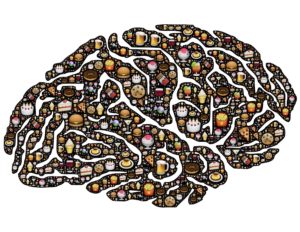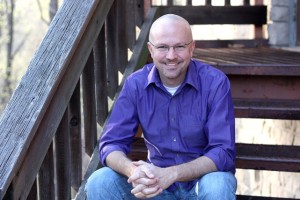
As I get older, I’m learning a truth I’d rather have left unknown. At some point in your child’s life, they will lose a friend.
A few months ago, my wife and I accompanied our college-aged son to the funeral of one of his friends. She was a17-year-old high school senior who was in enough pain to end her life by suicide.
There were so many people at the service that the crowd flowed out the doors of the building and onto the porch. Inside, I stood against the wall, literally shoulder-to-shoulder with her peers, family members, and teachers. It became astonishingly clear to me that she was loved and would be badly missed.
For her, though, in those last moments, the darkness she felt inside eclipsed the light of love present at her funeral.
Just days later, SAMHSA, the Substance Abuse and Mental Health Services Administration, released a report titled, The Key Substance Use and Mental Health Indicators in the United States: Results from the 2018 National Survey on Drug Use and Health. [1]
The report goes on for over 80 pages with statistics, charts, and endnotes, detailing the problems we as Americans have with drugs, alcohol, and mental illness. It covers topics such as:
- The percentage of adults and adolescents using alcohol, tobacco, opioids and a wide range of other illicit drugs
- The initiation of alcohol and substance use (at what age do people begin using drugs and alcohol
- The perceived risks involved with drug and alcohol use by Americans
- The percentage of people who seek treatment for their addictions
- The rates of mental illness among teens and adults in the U.S.
- The co-occurrence of mental illness and substance use
- Suicidal thoughts and behavior among teens and adults in the United States
The report is an exhaustive review of this data (honestly, it’s a dry read, and no one is rushing to make it into a Netflix series), but the information it presents is a sobering look at the crisis in our country.
And, as my family found out this summer, the human pain captured by the numbers plays out in front of our eyes daily.
A few of the key findings are:
- “In 2018, an estimated 164.8 million people aged 12 or older in the United States (60.2 percent) were past-month substance users (i.e., tobacco, alcohol, or illicit drugs).”
- “About 2.2 million adolescents aged 12 to 17 drank alcohol in the past month, and 1.2 million of these adolescents binge drank in that period.”
- “Prescription pain reliever misuse was the second most common form of illicit drug use in the United States in 2018, with 3.6 percent of the population misusing pain relievers.”
- “In 2018, an estimated 10.3 million people aged 12 or older misused opioids in the past year, including 9.9 million prescription pain reliever misusers and 808,000 heroin users.”
- “In 2018, approximately 647,000 young adults aged 18 to 25 attempted suicide in the past year.”
For those with mental illness, such as a Major Depressive Episode or other significant mental illness, substance use and abuse are more common than with the general population.
The reports states, “The percentages of adults who used illicit drugs in the past year were higher among those with SMI (49.4 percent) and adults with AMI (36.7 percent) compared with those without any mental illness (15.7 percent). ”
It is clear that struggling with a mental illness makes you much more vulnerable to drug and alcohol problems.
Together We Can Do Something About This Substance Use and Mental Health

One of the strongest protective factors we have for suicide and drug and alcohol abuse is each other. [2]
But, it’s not easy, and it’s going to take work. Politics aside, creating a community is not something Americans are very good at right now.
In a 2017 article in the Harvard Business Review, former U.S. surgeon general Dr. Vivek Murthy writes, “we live in the most technologically connected age in the history of civilization, yet rates of loneliness have doubled since the 1980s.” [3]
And, a 2018 study from Cigna reports, “Nearly half of Americans report sometimes or always feeling alone (46 percent) or left out (47 percent).” In addition, “One in four Americans (27 percent) rarely or never feel as though there are people who really understand them.” [4]
Changing the Story
While the recent report from SAMHSA paints a bleak picture and loneliness increases the lure of drugs and alcohol, we are not left without resources. We have one another.
Malcolm Gladwell, in his book, Outliers; The Story of Success, provides a glimpse into the power of connection and community. In an excerpt from the book published in the New York Times, [5], Gladwell describes one community whose connection with one another made a life-saving difference.
In the 1950s, Dr. Stewart Wolf from the University of Oklahoma stumbled onto the town of Roseto, Pennsylvania, and it’s incredibly healthy inhabitants. A local physician told him that he rarely treated heart attacks in patients under 65 years old. This was highly unusual as heart attacks were at epidemic numbers in the 1950s.
Skeptical, Dr. Wolf and his team began to investigate, only to become more astonished at their findings,
Gladwell writes, “In Roseto, virtually no one under 55 died of a heart attack, or showed any signs of heart disease. For men over 65, the death rate from heart disease in Roseto was roughly half that of the United States as a whole. The death rate from all causes in Roseto, in fact, was something like thirty or thirty-five percent lower than it should have been.”
But that’s not all, John Bruhn, a sociologist assisting Wolf, was amazed to discover that in the town of Roseto, “There was no suicide, no alcoholism, no drug addiction, and very little crime. They didn’t have anyone on welfare…These people were dying of old age. That’s it.”
Driven to explain this, the researchers explored every possible angle. They looked at diet, exercise, genetics, and geography. Nothing explained the mental and physical health of the people of Roseto until they considered the impact of the community.
Gladwell continues, “What Wolf slowly realized was that the secret of Roseto wasn’t diet or exercise or genes or the region where Roseto was situated. It had to be Roseto itself. As Bruhn and Wolf walked around the town, they began to realize why.

They looked at how the Rosetans visited each other, stopping to chat with each other in Italian on the street, or cooking for each other in their backyards.
They learned about the extended family clans that underlay the town’s social structure.
They saw how many homes had three generations living under one roof, and how much respect grandparents commanded.
They went to Mass at Our Lady of Mt. Carmel Church and saw the unifying and calming effect of the church.
They counted twenty-two separate civic organizations in a town of just under 2000 people.”
Wolf, Bruhn, and Gladwell all concluded that community, where we connect, what we do to support one another, and how we interact with others who inhabit the space around us, has a “profound effect on who we are.”
How will this knowledge affect our choices today? What can we do, in an age where we can’t stop looking at our screens, to connect with one another? Maybe it’s time to end this article and find someone to be with.
Take the initiative. Don’t wait for someone to reach out to you. Put down the phone. Close the laptop and go be with someone.
References:
[1] Lipari, R. N., & Park-Lee, E. (n.d.). Key Substance Use and Mental Health Indicators in the United States: Results from the 2018 National Survey on Drug Use and Health. Key Substance Use and Mental Health Indicators in the United States: Results from the 2018 National Survey on Drug Use and Health. Substance Abuse and Mental Health Services Administration (SAMHSA).
[2] Suicide Prevention Resource Center. Promote Social Connectedness and Support. (n.d.). Retrieved October 5, 2019, from https://www.sprc.org/comprehensive-approach/social-connectedness.
[3] Murthy, V. (2018, September 5). Work and the Loneliness Epidemic. Retrieved October 5, 2019, from https://hbr.org/cover-story/2017/09/work-and-the-loneliness-epidemic.
[4] Polack, E. (2018, May 1). New Cigna Study Reveals Loneliness at Epidemic Levels in America. Retrieved October 5, 2019, from https://www.cigna.com/newsroom/news-releases/2018/new-cigna-study-reveals-loneliness-at-epidemic-levels-in-america.
[5] Gladwell, M. (2008, November 28). ‘Outliers’. Retrieved October 5, 2019, from https://www.nytimes.com/2008/11/30/books/chapters/chapter-outliers.html.
About the Author:
 Travis Stewart, LPC has been mentoring others since 1992 and became a Licensed Professional Counselor in 2005. His counseling approach is relational and creative, helping people understand their story while also building hope for the future. Travis has experience with a wide variety of issues which might lead people to seek out professional counseling help. This includes special interest in helping those with compulsive and addictive behaviors such as internet and screen addiction, eating disorders, anxiety, and perfectionism. Specifically, he has worked with eating disorders since 2003 and has learned from many of the field’s leading experts. He has worked with hundreds of individuals facing life-threatening eating disorders in all levels of treatment. Travis’ website is wtravisstewart.com
Travis Stewart, LPC has been mentoring others since 1992 and became a Licensed Professional Counselor in 2005. His counseling approach is relational and creative, helping people understand their story while also building hope for the future. Travis has experience with a wide variety of issues which might lead people to seek out professional counseling help. This includes special interest in helping those with compulsive and addictive behaviors such as internet and screen addiction, eating disorders, anxiety, and perfectionism. Specifically, he has worked with eating disorders since 2003 and has learned from many of the field’s leading experts. He has worked with hundreds of individuals facing life-threatening eating disorders in all levels of treatment. Travis’ website is wtravisstewart.com
The opinions and views of our guest contributors are shared to provide a broad perspective of addictions. These are not necessarily the views of Addiction Hope, but an effort to offer a discussion of various issues by different concerned individuals.
We at Addiction Hope understand that addictions result from multiple physical, emotional, environmental and genetic factors. If you or a loved one are suffering from an addiction, please know that there is hope for you, and seek immediate professional help.
Reviewed and Approved by Jacquelyn Ekern, MS, LPC on October 8, 2019
Published October 8, 2019, on AddictionHope.com
